Human Spaceflights
![]()
International Flight No. 117Soyuz TM-6Soyuz TM-5ProtonUSSR |
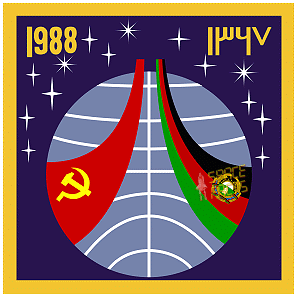 |
![]()
Launch, orbit and landing data
walkout photo |
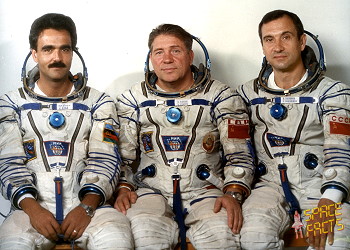 |
|||||||||||||||||||||||||||||||
alternative crew photo |
alternative crew photo |
|||||||||||||||||||||||||||||||
alternative crew photo |
alternative crew photo |
|||||||||||||||||||||||||||||||
alternative crew photo |
alternative crew photo |
|||||||||||||||||||||||||||||||
Crew
| No. | Surname | Given names | Position | Flight No. | Duration | Orbits | |
| 1 | Lyakhov | Vladimir Afanasiyevich | Commander | 3 | 8d 20h 26m 27s | 141 | |
| 2 | Polyakov | Valeri Vladimirovich | Research Doctor | 1 | 240d 22h 34m 47s | 3812 | |
| 3 | Momand | Abdulahad "Abdulah" | Research Cosmonaut | 1 | 8d 20h 26m 27s | 141 |
Crew seating arrangement
|
 |
|
||||||||||||||||
Backup Crew
|
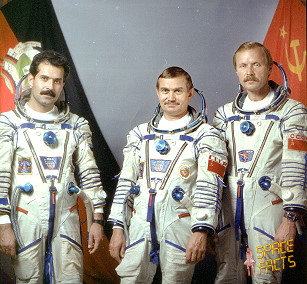 |
||||||||||||||||||||
alternative crew photo |
|||||||||||||||||||||
alternative crew photo |
|||||||||||||||||||||
alternative crew photo |
Hardware
| Launch vehicle: | Soyuz-U2 (No. 19M119S Ye15000-030) |
| Spacecraft: | Soyuz TM-6 (7K-STM No. 56) |
Flight
|
Launch from the Baikonur Cosmodrome and
landing with Soyuz TM-5 spacecraft
156 km southeast of Dzheskasgan. Abdulahad
Momand became the first cosmonaut from
Afghanistan. The crew had a unique makeup, with a Commander (Vladimir Lyakhov) who had been trained to fly a Soyuz TM solo in the event a rescue ship needed to be sent to recover two cosmonauts from Mir. Onboard the spacecraft was no flight engineer, but two inexperienced Research Cosmonauts. One was Valeri Polyakov, who remained aboard Mir with Vladimir Titov and Musa Manarov to monitor their health during the final months of their planned year-long stay. The Soyuz was placed in an initial orbit of 195 x 228 km at 51.57 deg. It then maneuvered to a 235 x 259 km orbit. Following a two-day solo flight Soyuz TM-6 docked with Mir-Kvant-Soyuz TM-5 on August 31, 1988. Scientific work with the third resident crew was done. This included Earth observation, materials sciences and medical research (including observation of earthquake regions, searching for mineral resources). Topographic camera Kate 140, the MKS-M spectrometer, the Spektr 256 analysator and a handcamera were used during the Shamshed experiment. Medical experiment included studying of movementproblems in minor gravitation. Valeri Polyakov stayed on board and became member of the third resident crew. Vladimir Lyakhov and Abdulahad Momand left their fresh spacecraft docked to Mir as a lifeboat and returned aboard Soyuz TM-5 The Soyuz spacecraft is composed of three elements attached end-to-end - the Orbital Module, the Descent Module and the Instrumentation/Propulsion Module. The crew occupied the central element, the Descent Module. The other two modules are jettisoned prior to re-entry. They burn up in the atmosphere, so only the Descent Module returned to Earth. The deorbit burn lasted about 240 seconds. Having shed two-thirds of its mass, the Soyuz reached Entry Interface - a point 400,000 feet (121.9 kilometers) above the Earth, where friction due to the thickening atmosphere began to heat its outer surfaces. With only 23 minutes left before it lands on the grassy plains of central Asia, attention in the module turned to slowing its rate of descent. Eight minutes later, the spacecraft was streaking through the sky at a rate of 755 feet (230 meters) per second. Before it touched down, its speed slowed to only 5 feet (1.5 meter) per second, and it lands at an even lower speed than that. Several onboard features ensure that the vehicle and crew land safely and in relative comfort. Four parachutes, deployed 15 minutes before landing, dramatically slowed the vehicle's rate of descent. Two pilot parachutes were the first to be released, and a drogue chute attached to the second one followed immediately after. The drogue, measuring 24 square meters (258 square feet) in area, slowed the rate of descent from 755 feet (230 meters) per second to 262 feet (80 meters) per second. The main parachute was the last to emerge. It is the largest chute, with a surface area of 10,764 square feet (1,000 square meters). Its harnesses shifted the vehicle's attitude to a 30-degree angle relative to the ground, dissipating heat, and then shifted it again to a straight vertical descent prior to landing. The main chute slowed the Soyuz to a descent rate of only 24 feet (7.3 meters) per second, which is still too fast for a comfortable landing. One second before touchdown, two sets of three small engines on the bottom of the vehicle fired, slowing the vehicle to soften the landing. During descent they suffered a computer software problem combined with a sensor problem. The deorbit engine on the Soyuz TM-5 spacecraft which was to propel them into atmospheric reentry, did not behave as expected. During an attempted burn, the computer shut off the engines prematurely, believing the spacecraft was out of alignment. Vladimir Lyakhov determined that they were not, in fact, out of alignment, and asserted that the problem was caused by conflicting signals picked up by the alignment sensors caused by solar glare. With the problem apparently solved, two orbits later he restarted to deorbit engines. But the engines shut off again. The flight director decided that they would have to remain in orbit an extra day (a full revolution of the Earth), so they could determine what the problem was. During this time, it was realized that during the second attempted engine burn, the computer had tried to execute the program which was used to dock with Mir several months earlier during the stay of the second resident crew. After reprogramming the computer, the next attempt was successful, and the crew safely landed on September 07, 1988. |
Note
Relocations of Manned Spacecrafts
| Spacecraft | from | Undocking | Time UTC | to | Redocking | Time UTC |
| Soyuz TM-6 | Mir - Kvant | 08.09.1988 | 01:04:46 | Mir - Baseblock | 08.09.1988 | 01:25:00 |
Photos / Graphics
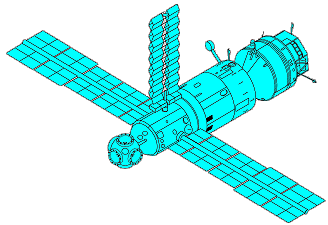 |
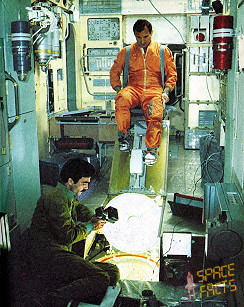 |
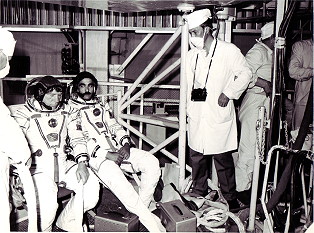 |
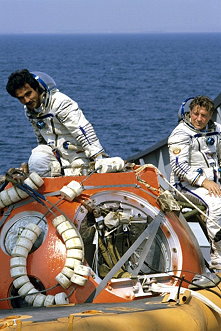 |
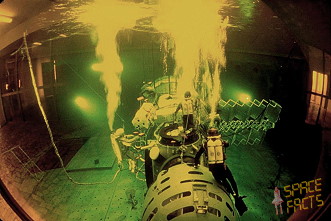 |
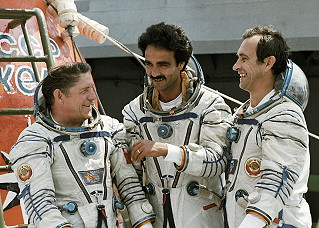 |
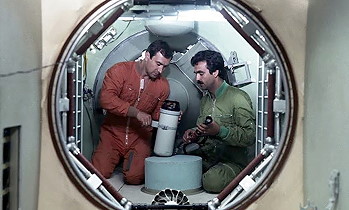 |
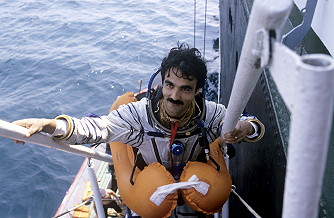 |
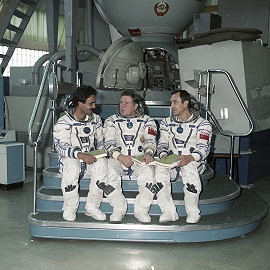 |
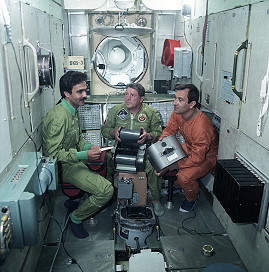 |
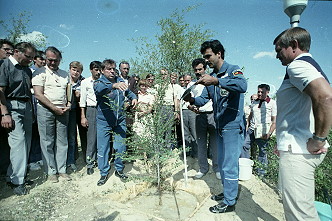
Credit: GTCT |
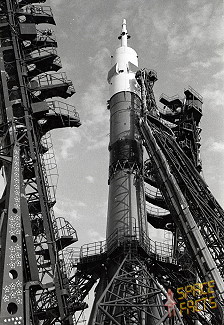 |
 |
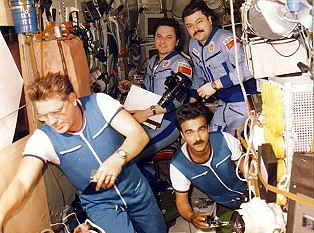 |
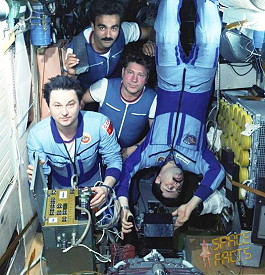 |
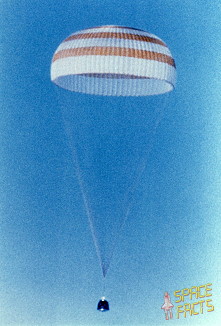 |
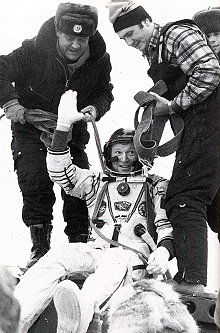 |
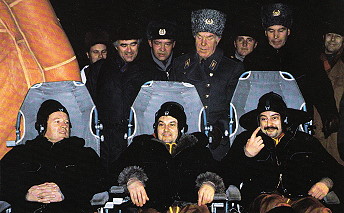 |
| © |  |
Last update on May 16, 2021.  |
 |